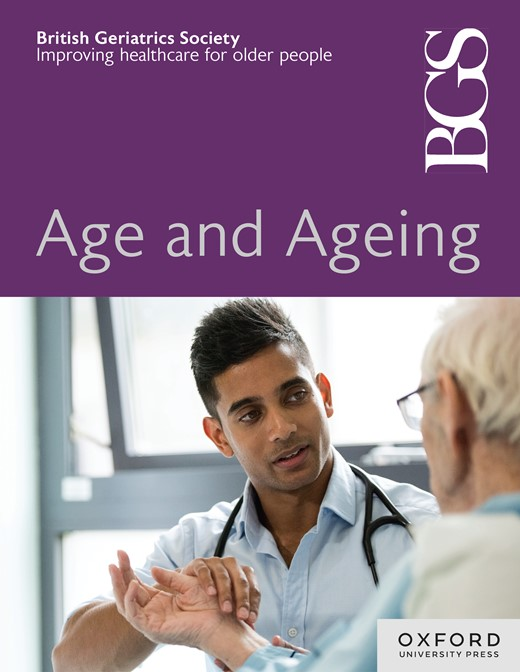Assessing the Impact of the Introduction Of Advance Care Planning In Nursing Home Residents Admitted to Hospital
IF 6
2区 医学
Q1 GERIATRICS & GERONTOLOGY
引用次数: 0
Abstract
Background Nursing home residents may present inappropriately to the Emergency Department at the end of life (EOL). Appropriate advance care planning (ACP) may reduce these presentations. Inpatient teams are in a position to discuss, document and support these ACPs for nursing home residents admitted under their care. Methods Building on existing inpatient and outreach specialist pathways in a model three hospital, formal ACPs were introduced for all inpatients from Jan 2024 admitted from a nursing home where it was deemed clinically appropriate. The completed advance care plan included decisions re cardiopulmonary resuscitation, level of intervention (including hospital transfer), antibiotics, fluids, nutrition plan and medications to support EOL care. ACP discussions took place with the consultant geriatrician, patient, nominated family/patient support and director of nursing. Data on discharged patients (including presence of ACP on discharge) was collected and analysed for emergency re-presentations. Results Of 137 patients discharged back to their nursing homes in the first 4 months of 2024, 41 (30%) had an ACP in place while 96 (70%) did not. Of those with ACP in place, 6/41 re-presented to Emergency Department within this timeframe vs 17/96 who were discharged without an ACP (15% vs 18%, p=0.66). However, only 3/41 with ACP were re-admitted to hospital from the emergency department vs 15/96 without an ACP (7% vs 16%, p=0.19). No patients discharged with an ACP re-presented and subsequently died in hospital, while 1/96 (1%) of those discharged without an ACP died in hospital after re-presentation. Conclusion ACP discussion did not reduce re-presentations to hospital but there was a non-significant trend towards a reduction in re-admissions. Overall, there was an extremely low rate (1/137, 0.7%) of patients re-presenting to hospital and dying during that admission. Further work is ongoing to examine the criteria that would prompt ACP discussion in nursing home residents admitted to hospital.评估预先护理计划对入院疗养院住户的影响
背景疗养院居民可能会在生命末期(EOL)不适当地到急诊科就诊。适当的预先护理计划(ACP)可以减少这种情况的发生。住院团队有能力讨论、记录和支持由其护理的疗养院居民的这些预先护理计划。方法 在一家示范性三甲医院现有的住院病人和外展专科路径的基础上,自 2024 年 1 月起,对所有从疗养院收治的住院病人引入正式的预先护理计划(ACP),只要该计划被认为在临床上是合适的。完成的预先护理计划包括心肺复苏、干预程度(包括转院)、抗生素、输液、营养计划和支持临终关怀的药物等方面的决定。老年医学顾问、患者、指定家属/患者支持者和护理主任共同讨论了 ACP。收集出院患者的数据(包括出院时是否进行了 ACP),并对急诊再次就诊的患者进行分析。结果 在 2024 年前 4 个月出院返回疗养院的 137 名患者中,41 人(30%)有 ACP,96 人(70%)没有。在已实施 ACP 的患者中,有 6/41 的患者在此期间再次到急诊科就诊,而 17/96 的患者在出院时未实施 ACP(15% 对 18%,P=0.66)。然而,只有 3/41 的患者在安装了 ACP 后从急诊科再次入院,而未安装 ACP 的患者有 15/96 再次入院(7% 对 16%,P=0.19)。有 ACP 的出院患者中,没有人再次入院后在医院死亡,而没有 ACP 的出院患者中,有 1/96 (1%)人再次入院后在医院死亡。结论 ACP 讨论并没有减少再次入院的人数,但有减少再次入院人数的非显著趋势。总体而言,再次入院并在入院期间死亡的患者比例极低(1/137,0.7%)。目前正在开展进一步的工作,以研究促使入院的疗养院居民进行 ACP 讨论的标准。
本文章由计算机程序翻译,如有差异,请以英文原文为准。
求助全文
约1分钟内获得全文
求助全文
来源期刊

Age and ageing
医学-老年医学
CiteScore
9.20
自引率
6.00%
发文量
796
审稿时长
4-8 weeks
期刊介绍:
Age and Ageing is an international journal publishing refereed original articles and commissioned reviews on geriatric medicine and gerontology. Its range includes research on ageing and clinical, epidemiological, and psychological aspects of later life.
 求助内容:
求助内容: 应助结果提醒方式:
应助结果提醒方式:


